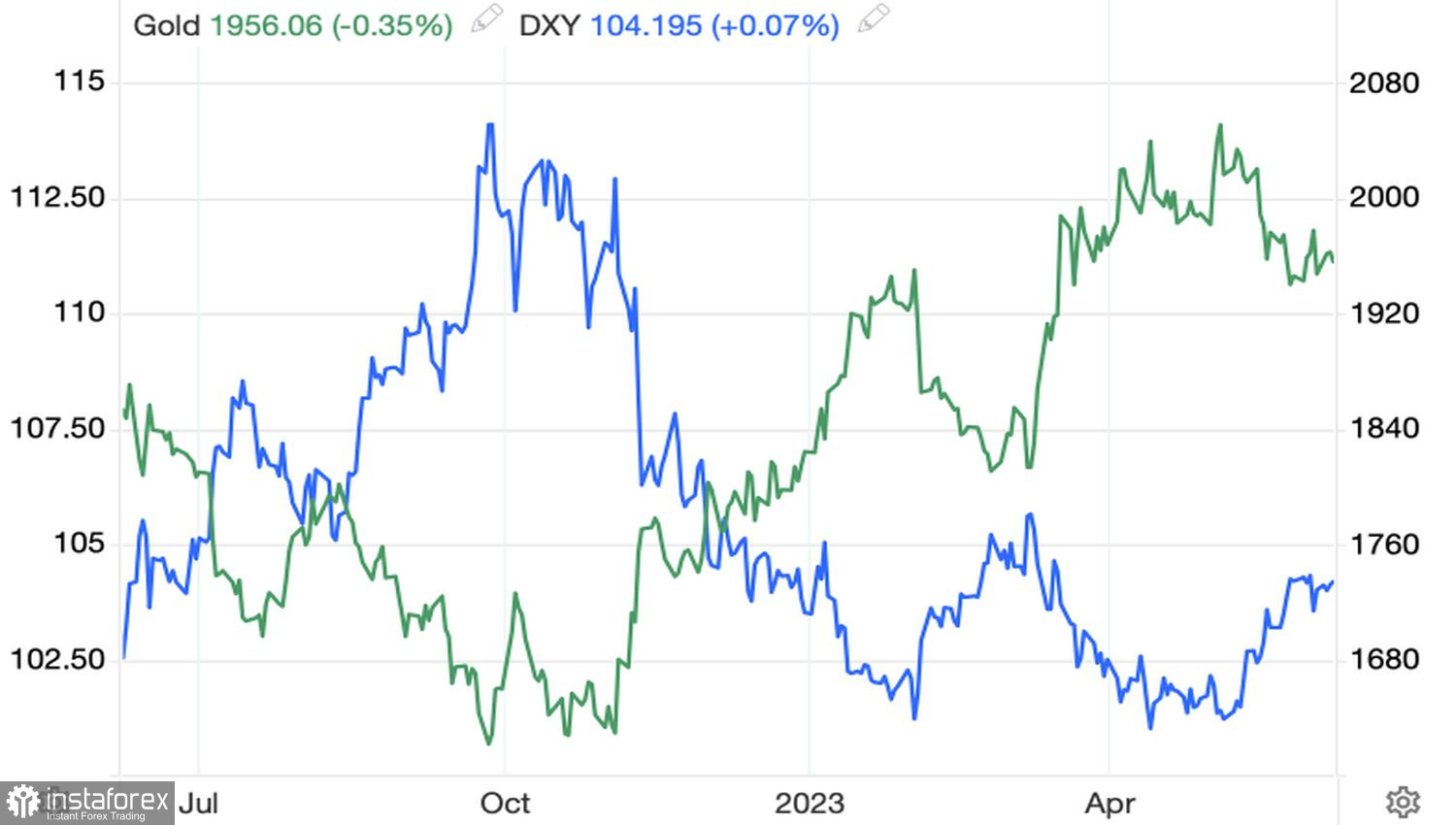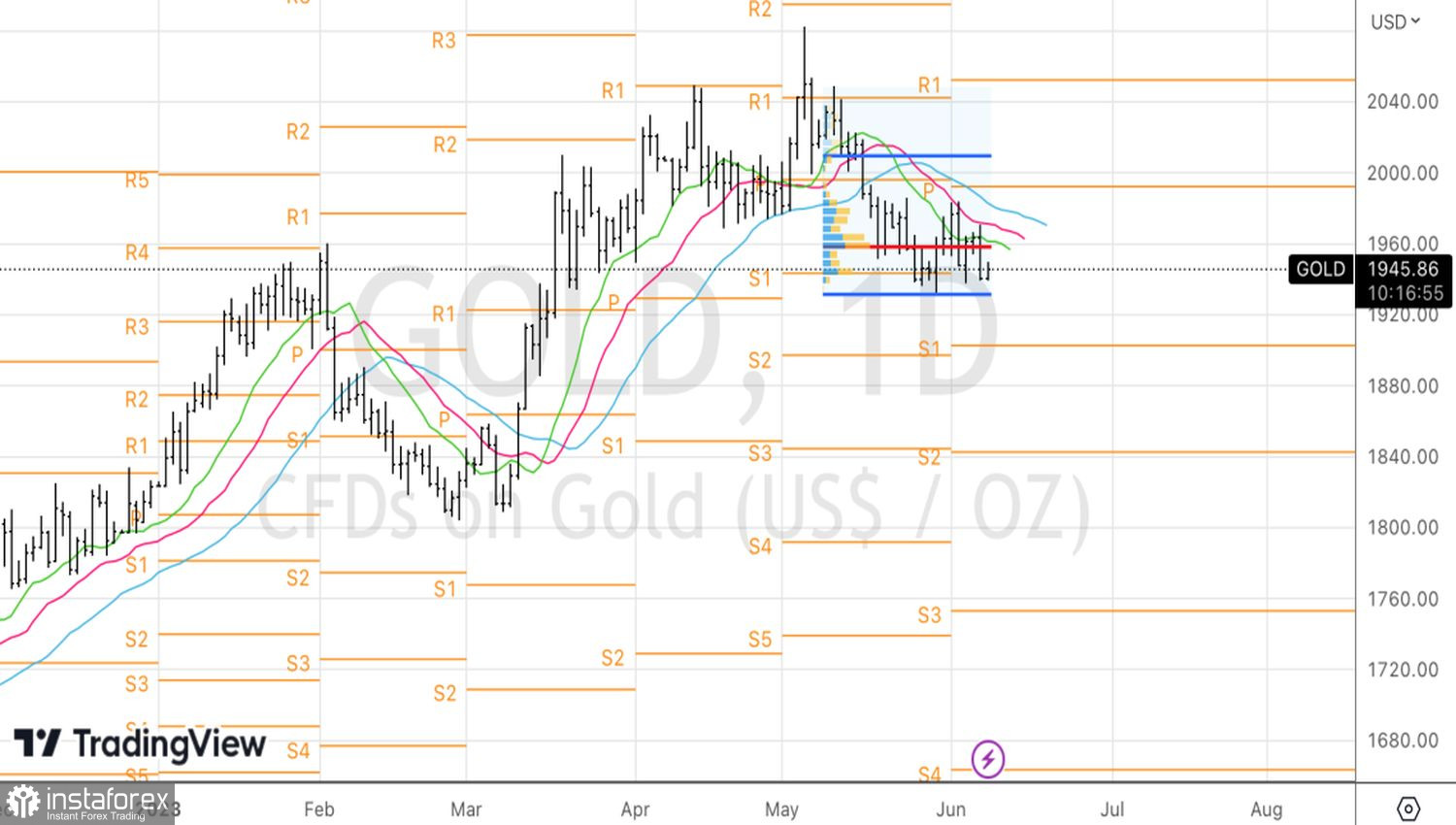Gold confidently holds its ground during recessions and monetary policy easing. It rose when the Federal Reserve (Fed) and the European Central Bank (ECB) lowered interest rates in the early 21st century, during the global financial crisis of 2008–2009 when the Fed initiated quantitative easing programs, and during the American monetary expansion in 2019–2020. Expectations of a dovish pivot in 2023 pushed XAU/USD quotes towards record highs. However, as soon as they began to retreat, the precious metal entered a correction phase.
Gold cannot be used as a tool for hedging price risks. It doesn't react to inflation itself but rather to how the Fed perceives inflation. In June, the central bank is discussing a pause and supposedly needs to assess new data to decide on a federal funds rate hike in July. This narrative allowed the precious metal to find support near the $1950 per ounce mark. If the macroeconomic data from the United States ends up disappointing investors more often than not, the chances of continuing the cycle of monetary restriction in mid-summer will decrease from the current 66%. This would weaken the U.S. dollar and push XAU/USD upwards.
Dynamics of gold and the U.S. dollar

Conversely, if incoming data proves that the U.S. economy is in good shape, the federal funds rate will continue to rise. Gold risks falling below $1930 per ounce. Nevertheless, its supporters should not panic too much: the higher the borrowing costs rise, the higher the risks of a recession. And during economic downturns, as we remember, gold feels right at home.
However, relying on a single macroeconomic statistic is not enough. The monetary policies of other central banks can also influence gold's dynamics. They usually act in unison—if one raises interest rates, the others follow suit. In this regard, the unexpected tightening of monetary policy by the Reserve Bank of Australia and the Bank of Canada, as reported by Bloomberg experts, pushed up global debt market yields and put pressure on XAU/USD.
If other regulators, amidst strong labor markets and consumer spending, resume cycles of monetary restriction en masse, why wouldn't the Fed raise borrowing costs as early as June? According to futures market data, the likelihood of this happening in June has increased from 25% to 35%, strengthening the position of the U.S. dollar and becoming a basis for speculative selling of the precious metal.

If central banks begin to raise interest rates en masse above the peaks expected by derivatives, gold risks losing its luster and dropping below the $1900 per ounce mark. However, much will depend on U.S. macroeconomic statistics and the Fed's readiness to follow the lead of its Australian and Canadian counterparts.
From a technical standpoint, there is a continued pullback towards the long-term upward trend. The inability of the "bulls" to overcome dynamic resistance in the form of the green moving average indicates their weakness. At the same time, a decline in gold below the local low of $1930 per ounce could trigger new selling towards $1900 and $1840.
 English
English 
 Русский
Русский Bahasa Indonesia
Bahasa Indonesia Bahasa Malay
Bahasa Malay ไทย
ไทย Español
Español Deutsch
Deutsch Български
Български Français
Français Tiếng Việt
Tiếng Việt 中文
中文 বাংলা
বাংলা हिन्दी
हिन्दी Čeština
Čeština Українська
Українська Română
Română

